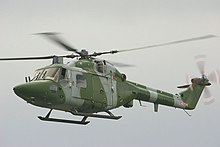세타 안드로메다
Theta Andromedae| 관찰 데이터 Epoch J2000 Equinox J2000 | |
|---|---|
| 콘스텔레이션 | 안드로메다 |
| 적경 | 00h 17m 05.50236s[1] |
| 적위 | +38°40°53.8886°[1] |
| 겉보기 등급(V) | 4.61[2] |
| 특성. | |
| 진화 단계 | 주계열[3] |
| 스펙트럼형 | A2 V[4] |
| U-B 색지수 | +0.05[2] |
| B-V 색지수 | +0.06[2] |
| 변수 유형 | 상수[5] |
| 아스트로메트리 | |
| 반지름 속도(Rv) | 0.9[6] km/s |
| 고유운동(μ) | - RA:57.551 (307)[1] mas/년 - Dec.:14.795 (표준)[1] mas/년 |
| 시차()) | 18.8747 ± 0.4251 mas[1] |
| 거리 | 173 ± 4y (53 ± 1 pc) |
| 절대 등급(MV) | −0.25[7] |
| 궤도[8] | |
| 기간(P) | 1033+91-77일 |
| 반장축(a) | 25+32 −13 마스 |
| 편심(e) | 0.95+0.04 ~0.40 |
| 기울기(i) | 69+8 −22° |
| 노드의 경도(δ) | 263+50 ° |
| 근일점 에폭(T) | 238+343-표준 |
| 근일점 인수()) (세컨더리) | 89+175 −29° |
| 세부 사항 | |
| A | |
| 덩어리 | 2.83±0.08[3] M☉ |
| 광도 | 113[7] L☉ |
| 표면 중력(log g) | 3.95gs[9] |
| 온도 | 8,960[9] K |
| 금속성 [Fe/H] | +0[9].14덱스 |
| 회전 속도(v sin i) | 102[3] km/s |
| 기타 명칭 | |
| 데이터베이스 참조 | |
| 심바디 | 데이터. |
안드로메다자리 세타는 북쪽 안드로메다자리에 있는 쌍성계이다[11].§ 안드로메다에서 라틴어로 표기된 세타 안드로메다는 바이어 명칭이다.태양으로부터 [1]약 173광년(53파섹) 떨어진 곳에 있으며 겉보기 등급은 4.[2]6이다.보르틀 다크 스카이 스케일은 도시 밖에서 육안으로 볼 수 있게 합니다.우주에서의 움직임으로 미루어 볼 때, 이 시스템은 시리우스 [12]초은하단의 일원인 것 같다.
밝은 성분은 백색 A형 주계열성으로 분광형은 A2 [4]V입니다.이 별은 지금까지 알려진 [5]것 중 광도변수가 가장 적은 별 중 하나이다.이 별은 [3]초속 102km의 높은 회전 속도를 보인다.질량은 태양의 약 2[3].[9]8배이며 유효온도 8,960K의 광구에서 113배의 광도를 방출하고[7] 있다.철과 무거운 원소의 화학적 함량이 상대적으로 높기 때문에 빠르게 회전하는 [5]Am별일 수 있습니다.
1986년에 항성 동반성이 발견되어 [13]1989년에 보고되었습니다.이 희미한 동반성은 안드로메다자리 세타에서 0.06초 [11]떨어져 있습니다.두 번째 별은 2.83년 주기로 1천문단위 거리에서 공전하고 있으며 궤도 이심률(타원성)이 0.[8]95로 큰 것으로 보인다.
명명
중국어로 톈지(天地)는 天地, 天地, 天地, 天地, 天地, 天地, 天地로 이루어진 별자리는 天地, 天地, 天地, 天地, 天地)로 구성되어 있다.따라서 ) 안드로메다에 대한 중국 이름 자체는 ))))(Tiann Ji) y english, 영어: 천구 안정의 첫 별)로 알려져 있다.[14]
레퍼런스
- ^ a b c d e f Brown, A. G. A.; et al. (Gaia collaboration) (2021). "Gaia Early Data Release 3: Summary of the contents and survey properties". Astronomy & Astrophysics. 649: A1. arXiv:2012.01533. Bibcode:2021A&A...649A...1G. doi:10.1051/0004-6361/202039657. S2CID 227254300. (에라타: doi:10.1051/0004-6361/202039657e).VizieR에서 이 소스에 대한 Gaia EDR3 레코드.
- ^ a b c d Johnson, H. L.; et al. (1966), "UBVRIJKL photometry of the bright stars", Communications of the Lunar and Planetary Laboratory, 4 (99): 99, Bibcode:1966CoLPL...4...99J.
- ^ a b c d e Zorec, J.; Royer, F. (2012), "Rotational velocities of A-type stars. IV. Evolution of rotational velocities", Astronomy & Astrophysics, 537: A120, arXiv:1201.2052, Bibcode:2012A&A...537A.120Z, doi:10.1051/0004-6361/201117691, S2CID 55586789.
- ^ a b Cowley, A.; et al. (April 1969), "A study of the bright A stars. I. A catalogue of spectral classifications", Astronomical Journal, 74: 375–406, Bibcode:1969AJ.....74..375C, doi:10.1086/110819.
- ^ a b c Koçer, D.; et al. (2003), "Elemental abundance analyses with DAO spectrograms-XXVII. The superficially normal stars θ And (A2 IV), ϵ Del (B6 III), ϵ Aqr (A1. 5 V), and ι And (B9 V)", Astronomy & Astrophysics, 406 (3): 975–980, Bibcode:2003A&A...406..975K, doi:10.1051/0004-6361:20030620.
- ^ Evans, D. S. (June 20–24, 1966), "The Revision of the General Catalogue of Radial Velocities", in Batten, Alan Henry; Heard, John Frederick (eds.), Determination of Radial Velocities and their Applications, Proceedings from IAU Symposium no. 30, vol. 30, University of Toronto: International Astronomical Union, p. 57, Bibcode:1967IAUS...30...57E.
- ^ a b c Anderson, E.; Francis, Ch. (2012), "XHIP: An extended hipparcos compilation", Astronomy Letters, 38 (5): 331, arXiv:1108.4971, Bibcode:2012AstL...38..331A, doi:10.1134/S1063773712050015, S2CID 119257644.
- ^ a b Goldin, A.; Makarov, V. V. (September 2006), "Unconstrained Astrometric Orbits for Hipparcos Stars with Stochastic Solutions", The Astrophysical Journal Supplement Series, 166 (1): 341–350, arXiv:astro-ph/0606293, Bibcode:2006ApJS..166..341G, doi:10.1086/505939, S2CID 15673734.
- ^ a b c d Hill, G. M. (February 1995), "Compositional differences among the A-type stars. 2: Spectrum synthesis up to V sin i = 110 km/s", Astronomy and Astrophysics, 294 (2): 536–546, Bibcode:1995A&A...294..536H.
- ^ "tet And", SIMBAD, Centre de données astronomiques de Strasbourg, retrieved 2021-05-31.
- ^ a b Eggleton, P. P.; Tokovinin, A. A. (September 2008), "A catalogue of multiplicity among bright stellar systems", Monthly Notices of the Royal Astronomical Society, 389 (2): 869–879, arXiv:0806.2878, Bibcode:2008MNRAS.389..869E, doi:10.1111/j.1365-2966.2008.13596.x, S2CID 14878976.
- ^ Palous, J.; Hauck, B. (July 1986), "The Sirius supercluster", Astronomy and Astrophysics, 162: 54–61, Bibcode:1986A&A...162...54P.
- ^ McAlister, Harold A.; et al. (February 1989), "ICCD Speckle Observations of Binary Stars. IV. Measurements During 1986-1988 from the Kitt Peak 4-m Telescope", Astronomical Journal, 97: 510, Bibcode:1989AJ.....97..510M, doi:10.1086/115001.
- ^ (중국어) AEEA (천문학 전시 및 교육 활동)2006년 5월 18일



